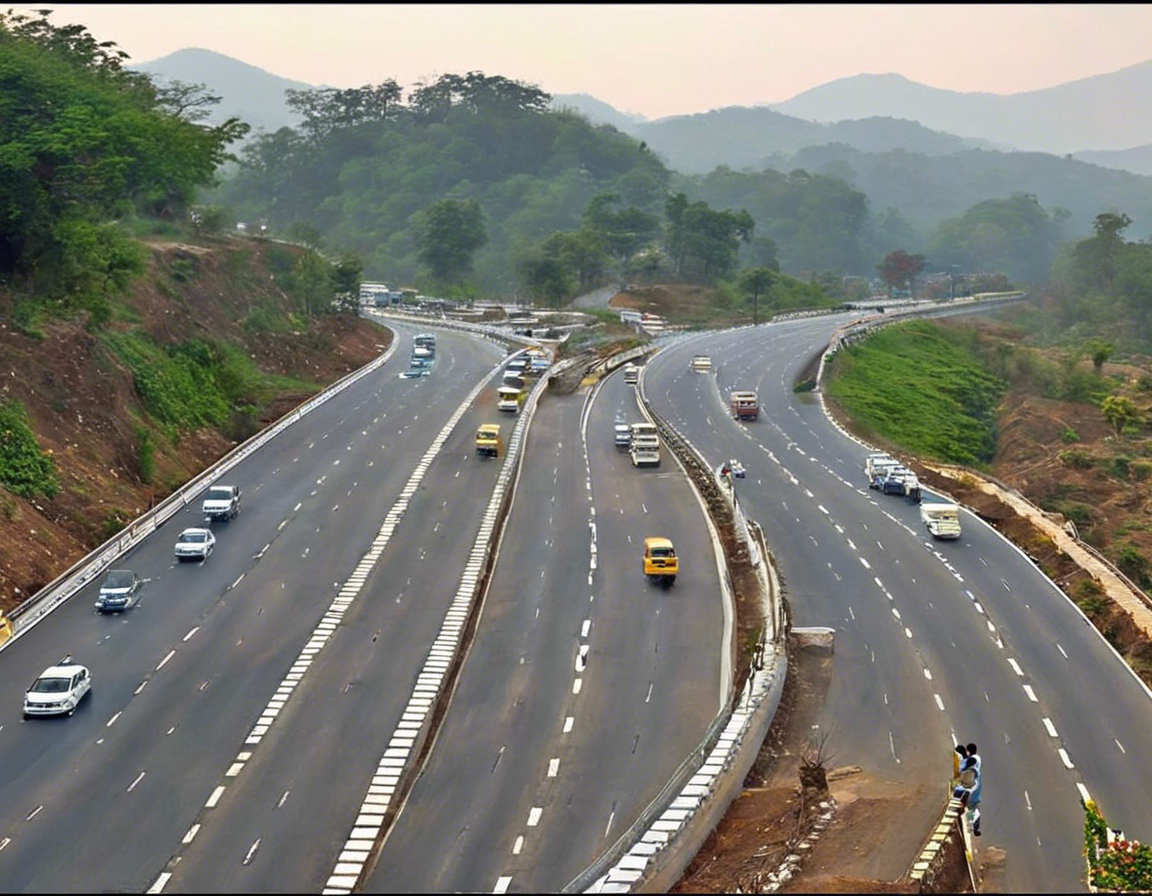India, with its vast expanse and growing population, constantly seeks to improve its transportation infrastructure to enhance connectivity and facilitate economic growth. The Delhi Dehradun Expressway is one such modern transportation link that aims to streamline travel between the bustling city of Delhi and the serene city of Dehradun. This comprehensive highway project not only reduces travel time but also boosts regional development and promotes tourism in the northern region of India.
The Significance of Delhi Dehradun Expressway
The Delhi Dehradun Expressway serves as a vital link between the bustling metropolis of Delhi, the capital city of India, and the tranquil city of Dehradun, nestled in the foothills of the Himalayas. This modern expressway aims to provide a seamless and efficient transportation corridor for commuters and goods between these two important cities.
Key Features of the Expressway
-
Efficient Connectivity: The expressway significantly reduces travel time between Delhi and Dehradun, offering a smooth and uninterrupted journey for commuters.
-
Economic Benefits: Improved connectivity can lead to increased trade and commerce opportunities, benefiting the local economy and driving regional growth.
-
Tourism Promotion: The expressway provides easier access for tourists to explore the natural beauty and cultural heritage of Dehradun and its surrounding areas.
Construction of the Expressway
The construction of the Delhi Dehradun Expressway entails modern engineering techniques and meticulous planning to ensure a durable and efficient transportation link. The project includes the following phases:
Planning and Survey
Before commencing construction, a detailed feasibility study and survey are conducted to assess the terrain, environmental impact, and alignment of the expressway. This stage is crucial for determining the optimal route and ensuring minimal disruption to the surrounding areas.
Land Acquisition
Acquiring the required land for the expressway is a critical aspect of the project. The authorities must follow legal procedures and compensate landowners fairly for the acquisition of land along the proposed route.
Construction Phase
The actual construction of the expressway involves a series of tasks, including earthwork, pavement laying, construction of bridges and flyovers, and installation of safety features. Modern construction equipment and techniques are employed to ensure the quality and longevity of the roadway.
Maintenance and Operation
Once the expressway is completed, regular maintenance and operation become essential to ensure the safety and smooth functioning of the transportation link. Routine inspections, repairs, and upkeep are carried out to uphold the expressway’s operational efficiency.
Benefits of the Delhi Dehradun Expressway
The Delhi Dehradun Expressway offers a myriad of benefits to commuters, businesses, and the region as a whole. Some of the key advantages include:
- Reduced Travel Time: The expressway significantly reduces travel time between Delhi and Dehradun, making it a convenient and time-saving option for commuters.
- Enhanced Connectivity: Improved transportation links foster better connectivity between urban centers and promote economic activities in the region.
- Boost to Tourism: The expressway enhances access to popular tourist destinations in Dehradun and its surroundings, attracting more visitors and boosting the local tourism industry.
- Safety and Comfort: Modern expressways are equipped with safety features and amenities for a comfortable driving experience, ensuring the well-being of commuters.
Environmental Considerations
While enhancing connectivity and promoting economic growth, it is crucial to consider the environmental impact of infrastructure projects like the Delhi Dehradun Expressway. Measures must be taken to mitigate any adverse effects on the ecosystem, wildlife, and local communities. Some environmentally friendly practices that can be adopted include:
- Green Belt Development: Planting trees and creating green spaces along the expressway can help reduce pollution, provide habitat for wildlife, and enhance the aesthetic appeal of the surroundings.
- Water Management: Implementing proper drainage systems and water conservation measures can prevent erosion and pollution of water bodies near the expressway.
- Wildlife Crossings: Building wildlife crossings or corridors can help mitigate the impact of the expressway on local fauna by providing safe passage across the roadway.
FAQs about the Delhi Dehradun Expressway:
1. How long is the Delhi Dehradun Expressway?
The Delhi Dehradun Expressway is approximately X kilometers long, providing a seamless connection between the two cities.
2. What is the expected travel time on the expressway?
With improved infrastructure and smoother traffic flow, commuters can expect to reach their destination in significantly less time compared to traditional routes.
3. Are there toll booths on the Delhi Dehradun Expressway?
Yes, toll booths are usually set up at strategic points along the expressway to facilitate maintenance and operational costs.
4. Is the expressway equipped with rest areas and facilities for travelers?
To ensure a comfortable journey, rest areas equipped with amenities such as restrooms, food outlets, and fuel stations are typically available along the expressway.
5. How does the expressway contribute to regional development?
By improving connectivity and reducing travel time, the Delhi Dehradun Expressway enhances trade, commerce, and tourism in the region, thereby stimulating economic growth.
6. Is the expressway designed to accommodate future expansions or traffic growth?
Yes, modern expressways are typically designed to accommodate future expansions and increased traffic flow through advanced planning and infrastructure design.
7. What safety measures are in place on the Delhi Dehradun Expressway?
The expressway is equipped with safety features such as guardrails, signage, lighting, and regular patrolling to ensure the safety and security of commuters.
8. How does the expressway impact the surrounding environment?
Efforts are made to minimize the environmental impact of the expressway through measures such as green belt development, water management systems, and wildlife crossings.
9. Can cyclists or pedestrians use the expressway?
Expressways are designed for motorized vehicles, and cyclists and pedestrians are typically prohibited from accessing these high-speed roadways for safety reasons.
10. Who is responsible for the maintenance of the Delhi Dehradun Expressway?
The maintenance and operation of the expressway are usually overseen by relevant transportation authorities or agencies to ensure its upkeep and smooth functioning.
